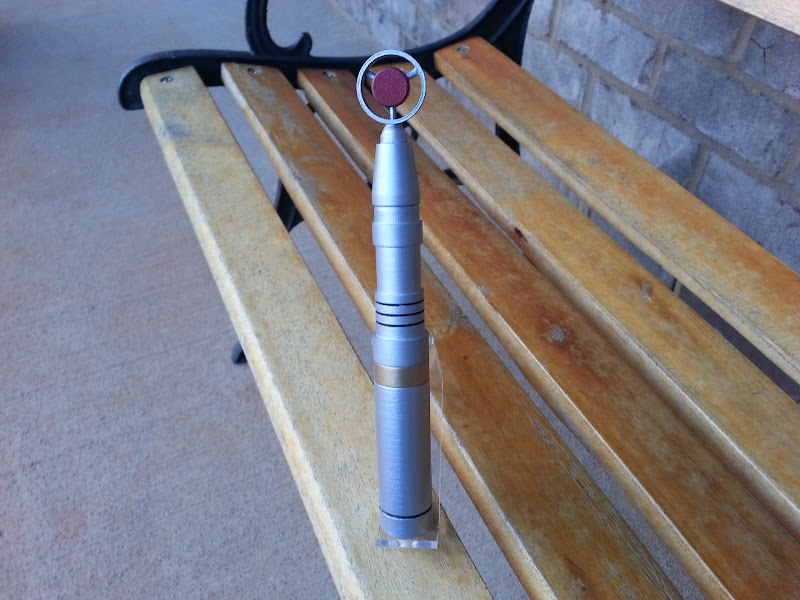Doctor Octoroc
Sr Member
Well, after three coats of acrylic metallic gold brushed on, the texture was offset enough that I felt safe giving the main parts a couple of coats of Krylon clear gloss acrylic spray, and it turned out not bad at all...it smoothed things out considerably! So once everything's painted (I still have to do the "wood" grips) I'll start weathering it (Doc, any drybrushing tips will be greatly appreciated, as I'm a bit of a novice with it) and then figuring out the electronics. Progress is slow but steady...
Cool! As far as dry brushing, the key is to put a small amount of paint on a mixing palette (a piece of paper works fine, that's what I used) and then mix it around as if you were mixing two colors. The whole concept of dry brushing is that the paint is practically dry when you apply it, so less paint the better to start off with and you can use more on the next passes if that doesn't seem like enough. Feel free to use a crappy brush, even if the bristles come out - they'll add some extra nicks in the finish once it dries and you pull them out! Quick back and forth motion across the piece is key, and to start, only the tip of the brush running across. You can push it into the piece more and more once you see how the effect is coming along. Ease into it slowly until you see the desired effect.
To recap: Small amount of paint, practically dry, quick back and forth movements with the tip, and ease into heavier application until you see the effect you want. Once you get the hang of it, you can reach the same consistency over the whole piece, but even if it's not perfect, that'll only add to the effect - that's the beauty of dry brushing, it's supposed to look weathered and worn!
It's up to you if you want to run sideways across the piece or up and down along it - I generally go at an angle at opposite directions and cross hatch, unless you have a specific directional wear for the item - in this case, I'd stick with random and diagonal so it looks naturally worn down - if you go too horizontal it may look manufactured, and if you go too vertical it could fill in the grooves too well and it will eliminate the effect.
Another tip is to do a dark base coat (the color of the wear) first, then the lighter over coat (color of the actual material before wear). This way you can lay on the dry brushing heavier and what is left unpainted will be the wear. If you've already done a light over coat (color of the piece before wear) then go very light on the dark dry brushing.
Hope that helps. Youtube I'm sure has some video tutorials, so you can get a feel for the way it looks to do what I described above lol.
Last edited:






